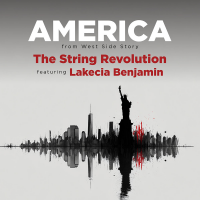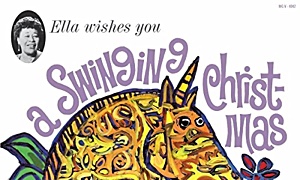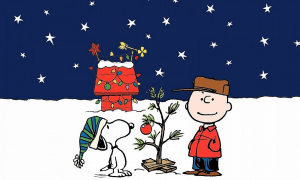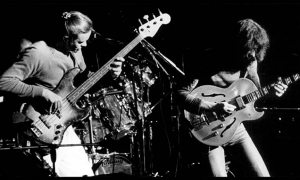Home » Jazz Articles » Jazz & Juice » Ease: Chardonnay meets The Modern Jazz Quartet
Ease: Chardonnay meets The Modern Jazz Quartet
Ease
I've found that the biggest misconception about any art or craft is that it must be difficult to grasp in order to be considered seriously. As students of a subject, we sometimes think we need more information or guidance in order to understand or enjoy the thing we're interested in. I know when I talk to people about wine or jazz, many otherwise confident people suddenly become embarrassed that they don't know more, or enough, about either. Simply enjoying something (an album, a glass) may seem like a paltry jumping off point for knowledge, but that's where we often successfully start.Last month I shared my axiom "Knowledge is pleasure." Pleasure is its own kind of knowledge and a gateway to more—which is the direction we'll be going in this month, and why I've chosen two examples in wine and music that are easy to love. We'll explore two very approachable examples in both wine and song, and discover how they provide a most enjoyable way to reach greater depths of understanding.
The Juice
 Now, let's begin by exploring Pence Ranch Chardonnay 2018. It's from the AVA of the Santa Rita Hills in Santa Barbara County. This wine is a product of many influences—French oak and Burgundian technique, and the special energy and exuberance that characterizes fruit from this distinctive high altitude, coastal region. Through European influence, and being true to its origin place, the wine is entirely its own—much like the music we'll be listening to later.
Now, let's begin by exploring Pence Ranch Chardonnay 2018. It's from the AVA of the Santa Rita Hills in Santa Barbara County. This wine is a product of many influences—French oak and Burgundian technique, and the special energy and exuberance that characterizes fruit from this distinctive high altitude, coastal region. Through European influence, and being true to its origin place, the wine is entirely its own—much like the music we'll be listening to later. Almost everyone knows something about Chardonnay (even if they only think they don't like it.) Chardonnay grows in myriad climates successfully, from Chablis in France to Australia's Margaret River, and of course California. In wine terms, Chardonnay is what's known as 'vigorous'—meaning that the growth of the fruit, leaves, and shoots, tends to be prolific. As a result, a grower must manage and prune carefully; excessive leaf growth will hinder ripening. When it comes to the fruit, over productive vines produce less concentrated grapes. With Chardonnay especially, we see that just because something is easy to grow doesn't mean it's easy to grow well.
Similarly in music, especially jazz, executing a standard ballad with restraint and feeling, true to the melody, is often harder than playing florid lines and complicated licks. Doing something well doesn't mean doing something more.
I chose to share this entry level wine from Pence (it retails around $25, I'll include some links on where to get it below) because it's undeniably pleasurable, and showcases what is so special about the best Chardonnays and Pinot Noirs in the AVAs within Santa Barbara—a perfect balance of fresh energy with an undeniable influence of a longer winemaking tradition. In this bottle, the panache of vibrant fruit is offset by a complementary touch of new French oak, which adds a toasty warmth to its natural brisk energy. If over the top domestic Chardonnays have dampened your enthusiasm for what this grape can do in the right place and in the right hands, this is a wine that will reset the bar.
Restrained exuberance, careful editing, and European influence also are on full display as we move from the realm of the sensory to the auditory with the Modern Jazz Quartet.
The Jazz
 To even the most casual jazz listener the sound (if not the name) of The Modern Jazz Quartet is immediately familiar—the "MJQ" was one of the longest lived small ensembles in jazz history, working and recording for more than 40 years (including a few false farewells), and a few other formations of the group make the history even longer.
To even the most casual jazz listener the sound (if not the name) of The Modern Jazz Quartet is immediately familiar—the "MJQ" was one of the longest lived small ensembles in jazz history, working and recording for more than 40 years (including a few false farewells), and a few other formations of the group make the history even longer. The core or "classic" MJQ consisted of pianist and artistic director John Lewis, vibraphonist Milt Jackson, bassist Percy Heath and drummer Connie Kay; together they are one of the most popular small jazz ensembles to exist. The output is dizzying—the MJQ released 45 albums, and performed around the world in concert halls usually reserved for more classical (or perceptively "serious") music. Elegance and impeccable taste characterized everything this ensemble did musically, visually, and professionally.
The ensemble's restraint was particularly notable (and rare) when it came to solos. Milt Jackson spoke for the group when he said: "We abhor long solos. If good things don't happen in the first chorus of any solo, it's generally not going to happen at all."
The MJQ piece I've chosen to focus on is George Gershwin and DuBose Heyward's Summertime— a song that is familiar to all yet always asks to be heard again. Like some Chardonnays, there are plenty of underwhelming renditions, but when the performance is great, there is simply nothing better. The song begins with an ostinato line on the vibes (or rather, the vibraharp as the quartet preferred to bill it.) Jackson's ascending intervallic line that underpins the piece creates the key ingredient in any good arrangement (or wine, for that matter): tension. When the full, legato melody line layers on this scaffolding, the song is at once soulful and familiar, yet alert and tensile.
Incredibly, the MJQ was more than just mainstream jazz, it was mainstream music. Their sounds were found in many suburban homes, in record collections otherwise devoid of jazz. Many jazz lovers then, and now, might have found themselves overlooking the constancy of the MJQ's sound and presence for more unbridled or outwardly explorative strains of the music. For instance in 1966, as MJQ released Blues at Carnegie Hall, Herbie Hancock's released Maiden Voyage, and John Coltrane his Ascension. Perhaps because MJQ was perceived to be more mainstream they may have been overlooked by aficionados—it's tempting to think because something is comfortable, it's not worth more serious attention.
Personally, preparing this article prompted me to listen to The Modern Jazz Quartet with much more intent, and to appreciate their contribution in a much more significant way. It sure didn't hurt to have a cool glass of Chardonnay to enhance the experience!
What's Next
Things will get interesting next week in our tasting video, where I'll spend some more time with the wine and have a more intensive discussion about oak, and European influence on The Modern Jazz Quartet's music. After that all ferments and I get your comments, we'll see where the podcast takes us. As always, I welcome your comments below, or contact me, with Jazz & Juice in the subject. See you soon!Tags
Jazz & Juice
The Modern Jazz Quartet
Kristen Lee Sergeant
Modern Jazz Quartet
Chardonnay
The Complete Last Concert
MJQ
Milt Jackson
John Lewis
Percy Heath
Connie Kay
jazz and juice
Pence Ranch Chardonnay 2018
Pence Ranch Chardonnay
Santa Rita Hills
About Modern Jazz Quartet
Instrument: Band / ensemble / orchestra
PREVIOUS / NEXT
Support All About Jazz
 All About Jazz has been a pillar of jazz since 1995, championing it as an art form and, more importantly, supporting the musicians who make it. Our enduring commitment has made "AAJ" one of the most culturally important websites of its kind, read by hundreds of thousands of fans, musicians and industry figures every month.
All About Jazz has been a pillar of jazz since 1995, championing it as an art form and, more importantly, supporting the musicians who make it. Our enduring commitment has made "AAJ" one of the most culturally important websites of its kind, read by hundreds of thousands of fans, musicians and industry figures every month.



























